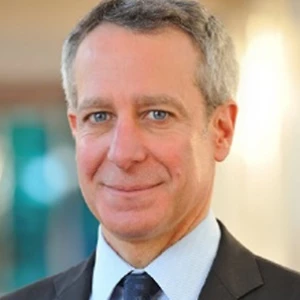As much of the world recovers from blistering heat waves, and with an unpredictable winter approaching, the stability of energy systems is top of mind in many nations. It’s instructive, therefore, to revisit how the European Union managed to remain resilient through the first year of the war in Ukraine.
In the fall of 2022, Russia shut most of its gas pipelines to Europe over the EU’s support for Ukraine. With gas storage levels low and options for quickly replacing one of its most important energy sources far from clear, EU countries braced for energy rationing, skyrocketing electricity and fuel prices, and a likely recession.
EU’s bold policy combined conservation, massive investment to diversify energy sources, and a willingness to temporarily veer from decades of energy strategy.
Yet EU countries emerged from the winter of 2022–2023 with natural gas storage levels at their highest level in years, fuel prices back down to preinvasion
The energy crisis had a high human toll, however. And the EU’s ultimate success came at an enormous cost for nations in other regions that struggled to cope with energy scarcity and soaring fuel energy prices. The green transition slowed in many nations as energy reliability and affordability took precedence over the climate. The crisis also underscored the fact that energy will play a major geopolitical role. Given that further energy disruptions are likely to occur, policymakers, energy producers, and consumers should therefore learn from the key lessons of the past year’s global energy crisis.
Lesson 1: Invest in Resilience Early On
The EU proved that energy security can be bought in an emergency—if you have the financial resources. But the cost and the negative second-order effects on other countries were much higher than they should have been had the region’s governments had a more resilient energy system in the first place.
To cope with the loss of 140 billion cubic meters of Russian natural gas, the governments of EU countries spent more than $800 billion on energy-related measures, a sharp increase over the previous year. They spent more than ten times as much in 2022 as in 2021 to increase stockpiles of natural gas from Norway and other suppliers. The EU also spent massively to acquire LNG on spot markets. Lacking the capacity to process imported LNG and transport the gas to pipelines, the lower house of Germany’s Bundestag approved spending of more than $10 billion to charter five floating storage regassification units (FSRUs)—three times more than the program’s initial budget.
The EU’s actions, however, disrupted the global LNG market by creating a mismatch between supply and demand. Skyrocketing LNG prices imposed severe hardships on nations that lacked the EU’s vast financial resources. Several low-income and lower-middle income countries were forced to return to temporarily cheaper—yet more carbon-intensive—fossil fuels, such as coal, setting back international efforts to mitigate global warming. For example, Pakistan, which experienced blackouts and an economic crisis in 2022 due to the natural gas shortage and unaffordable LNG, plans to quadruple its coal-fired power generation capacity.
Stresses on the LNG market also caused diesel-fueled power generation to rise by 17% as nations sought cheaper and more secure energy sources. The crisis had a devastating human component for those who could not afford the rising prices, including within EU itself. The Economist estimates that higher energy prices claimed the lives of at least 68,000
Lesson 2: Keep Energy Policy and Strategy Agile
Germany’s response to the energy crisis demonstrates the immense value of flexibility in energy policy and strategy. Germany realized that the rapid pivot to LNG would likely be a short-term solution. So it largely avoided locking itself into long-term LNG contracts. And instead of building permanent LNG gasification terminals that would likely operate for decades, Germany opted for leasing FSRUs that could move to other locations as its needs change.
What’s more, fast action and collaboration between utility companies, government authorities, and politicians enabled Germany to bring its first FSRU in Wilhelmshaven online in a record 10 months. Normally, it takes Germany four years to complete a major energy project, with much of that time allocated to planning, permitting, testing, and certification. Germany fast-tracked these processes in response to the crisis.
Germany also exhibited flexibility by backtracking on two decades of energy policy. This was first done by announcing it will restart 27 idle coal-fired power plants by March 2024. France, Austria, Italy, and the Netherlands have also announced plans to restart idle coal power plants, even as coal-fired generation continues to decline in Europe in the face of rapidly rising renewable capacity.
The Biden administration in the US also exhibited flexibility. It came into office aiming to slow production of natural gas and oil to address climate change. In response to the war, it switched gears and pushed hard to expand US liquid natural gas (LNG) exports to key trade partners.
In both the EU and the US, these were difficult decisions made to address an extraordinary crisis. Implementing such measures inevitably comes at an environmental cost. The crisis response illustrated the often-hard tradeoffs that governments make between energy security and sustainability. It also underscores the importance of avoiding or managing such tradeoffs in the future.
Lesson 3: Diversity Is the Key to Energy Security
The energy crisis that followed Russia’s invasion of Ukraine exposed the dangers of overreliance on any single energy supplier or source. By maintaining a diverse energy mix, including renewables, natural gas, and nuclear, countries can have the flexibility and resilience needed to mitigate the risks of supply disruptions caused by geopolitical tensions, natural disasters, and other unanticipated events.
The EU eased its dependence on Russian natural gas, for example, by increasing its imports of LNG from Qatar by around one-quarter and more than doubling its imports from the US, a strategic geopolitical ally. Several Asian and European countries reduced their reliance on gas by taking the short-term measure of boosting their use of oil for power generation by around half between from the third quarter of 2022 through the first quarter of 2023, the first such increase in 20 years. Oil-fired power generation is a last-resort fuel because it is inefficient, often expensive, and significantly more polluting. This increased pollution harms the efforts to reduce both CO2 emissions as well as particulate emissions.
A more diverse energy mix would also enable countries that now rely heavily on coal to mitigate the risk of major disruptions due to increasingly severe winter storms in some regions that can freeze coal and make it hard to ship.
Subscribe to our Energy E-Alert.
Lesson 4: Resilience Measures Should Be Future Proofed
Investments in a wide variety of energy sources can also help ensure countries are prepared both for future disruptions and the longer-term transition to low-carbon fuels. The US is promoting such investments through several ambitious initiatives. Among the Inflation Reduction Act’s provisions are $369 billion in spending and tax credits over 10 years for energy security and climate change programs, including clean hydrogen, zero-emission nuclear power, and carbon capture and storage. The US CHIPS and Science Act offers billions of dollars in subsidies for critical technologies such as semiconductors, which are important for such digital solutions as smart grids and integrating renewable energy into power grids.
The EU also plans to invest aggressively in its energy future . The EU’s proposed Net Zero Industry Act aims to scale up manufacturing of clean-energy technologies. Other proposed legislation seeks to secure a diverse, affordable, and sustainable supply of critical raw materials needed for clean-energy solutions. The European Commission’s Green Deal Industrial Plan for the Net-Zero Age includes proposed measures to accelerate the decarbonization of industry and improve global competitiveness in green technologies. Among other things, it will streamline regulation of everything from lithium-ion batteries and solar installations to carbon capture systems.
Companies can also future proof their existing energy infrastructure. SoCalGas, the largest US natural gas distributor, plans to make its gas pipelines and storage facilities usable in the future for hydrogen and renewable natural gas. The Netherlands is also repurposing a natural gas pipeline to carry hydrogen.
Lesson 5: Reduce Demand and Increase Efficiency
The International Energy Agency calls energy efficiency the first fuel of a sustainable global energy system. Higher natural gas and electricity prices over the past year in Europe and other regions caused both “bad efficiency” and “good efficiency.” Bad efficiency reduces growth and, in some cases, jeopardizes public health as low-income households cut needed energy use because of unaffordability. Good efficiency reduces energy demand without slowing economic growth and harming human health. Examples include using higher efficiency boilers and electrifying end uses that currently are fossil fuel powered. Good efficiency has a greater chance of creating a durable reduction in demand, enabling countries to achieve climate goals faster and freeing up funds that can be deployed elsewhere.
Japan illustrates the benefits of protracted efforts to improve energy efficiency. Japan lacks sufficient natural energy resources. Yet it has remained an industrial powerhouse through efficient energy usage supported by years of smart government and company policies. Examples include strict uses of air conditioning in buildings, a push to increase the efficiencies of vehicles, and a greater use of public transport, particularly in and around Tokyo.
Since the invasion of Ukraine, global primary energy intensity—a measure of how much energy is used to produce a unit GDP—improved by almost 2%, approaching the highest point in nearly a decade.
Applying the Lessons Learned
The implications of these five lessons for energy policymakers, producers, and consumers should inform future action.
Steps for Energy Policymakers. Energy policymakers should identify energy disruption risks, their potential impact on costs, and investments needed to mitigate such risks. Recognize that only being reactive will be far costlier in the end and could have serious second-order effects. Consider conducting simulations to model these impacts under different scenarios.
Remain agile by preparing to quickly shift gears when existing policies are no longer appropriate in a new environment. Rather than merely erecting new investment hurdles, collaborate more closely with producers on projects needed to improve energy security and be willing to speed up approvals. Design incentives that encourage consumers to adopt energy-efficient practices and producers to switch fuels and develop storage facilities that can be used for different types of fuels. Policymakers should reduce subsidies for electricity generated from fossil fuels, which can distort price signals and slow the green transition.
Strengthen energy security by reducing dependence on a single supplier, diversifying energy sources, and establishing policies that will withstand temporary shifts in the political winds. Develop contingency plans to manage supply disruptions and protect energy infrastructure.
Policymakers must also work to keep the green transition on track despite signals that public support for climate change action may be at risk. In the US, for example, the percentage of adults who say global climate change is a threat to the country dropped from 58% in 2019 to 54% in 2022, according to the Pew Research Center, though support is still higher than in the early 2010s. Government climate policies are also under pressure in European nations as the Netherlands, where farmers have resisted new limits on greenhouse-gas emissions. Policymakers should remain unambiguous on the need for mitigating climate change and continually engage different stakeholders in the energy future so that long-term benefits of the green transition are well understood.
Steps for Energy Producers. Energy producers should diversify their energy portfolios to include a variety of fuels from geographically dispersed sources, while remaining committed to reducing carbon intensity over time. Ensure that energy can be shipped to end-users over multiple routes, in case one or more face disruption. Make sure there is enough extra capacity to increase energy production and flows if suddenly needed. Maintain contracts and trading relationships across different time horizons to minimize risk and maximize flexibility.
Recognize that price volatility will complicate the transition to renewables. Use periods of high energy prices to become more resilient by making strategic investments and improving risk management through financial hedging, maintaining backup capacity, and significantly increasing storage. Enhance value to shareholders to maintain their support, and work with policymakers to improve energy infrastructure. As low-carbon infrastructure is built out, maintain the flexibility to shift to high-carbon fuels if needed. And evaluate existing fossil-fuel infrastructure to see if it can be repurposed for low-carbon fuels, such as hydrogen.
Putting in place a comprehensive and flexible energy resilience strategy can help mitigate both the risks and costs of the next great disruption.
Steps for Energy Consumers. Energy consumers should plan for potential supply disruptions and price volatility. Foster a “demand response” operating mode, adjusting usage as prices reach high and low extremes. Seek geographic flexibility so that production lines can be moved to other regions or to contractors in case of energy-supply disruptions. Where possible, have onsite backup energy options, such as generators and solar panels, on site.
Consumers should also continuously improve energy efficiency. Identify areas to curtail energy use and prepare to reduce or halt nonessential services during high-volatility situations. Over the short term, carbon intensity may need to increase to prevent systems from collapsing. But individuals and businesses should continue to decarbonize and promote domestic low-carbon energy to reduce dependence on imported energy.
There’s much to learn from the EU’s initial policy and strategic response to one of its most serious disruptions to energy supply in more than half a century. But the experience also illustrated the potentially grave consequences—for the EU and beyond—of not being adequately prepared for a major emergency. Putting in place a comprehensive and flexible energy resilience strategy can help mitigate both the risks and costs of the next great disruption.









